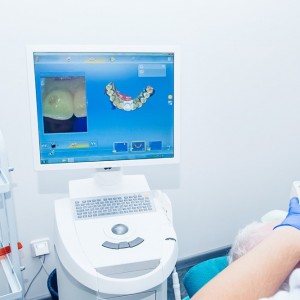
Advances in bone augmentation to enable dental implant placement: Consensus Report of the Sixth European Workshop on Periodontology
Background
Bone augmentation procedures to enable dental implant placement are frequently performed in practice.
Methods
In this session the European Workshop on Periodontology discussed the evidence in support of the procedures and examined both adverse events and implant performance in the augmented bone. While the available evidence improved both in quantity and quality since previous workshops the conclusions that could be drawn were limited by elements of design and/or reporting that are amenable to improvement.
Results
With regards to lateral bone augmentation, a sizable body of evidence supports its use to enable dental implant placement. The group recognized the potential for vertical ridge augmentation procedures to allow implant placement in clinical practice but questioned the applicability of these data to a wider array of operators and clinical settings. With regards to sinus floor augmentation, perforation of the sinus membrane, graft infection and graft loss resulting in inability of implant placement were the major reported adverse events. In cases with <6 mm of residual bone height, 17% of subjects experienced implant loss in the first 3 years following lateral window augmentation. After trans-alveolar sinus floor augmentation 11% of subjects experienced implant loss over 3 years. Significant research activity (both pre-clinical and clinical) was identified in the area of growth factors-induced bone augmentation. Initial clinical trials support the potential of BMP-2.
Conclusions
Clinically, the consensus highlighted that bone augmentation procedures can fail and that implants placed in these areas do not necessarily enjoy the high long-term survival rates of dental implants placed in pristine sites. The consensus emphasized the research need to answer questions on: (i) long-term performance of dental implants placed in augmented bone; (ii) the clinical performance of dental implants placed in augmented or pristine sites; and (iii) the clinical benefits of bone augmentation with respect to alternative treatments.
Authors: Maurizio S. Tonetti, Christoph H. F. Hämmerle,
Source: https://onlinelibrary.wiley.com/
 Tag
Tag
 Related articles
Related articles
Restorative dentistry 01 July 2025
Advances in CAD/CAM Technology for Chairside Restorative Dentistry: A Workflow Analysis
Chairside CAD/CAM technology has revolutionized restorative dentistry, offering streamlined workflows and improved patient outcomes.
News 20 May 2025
Governor Brian Kemp recently signed into law House Bill 567, a milestone piece of legislation that expands access to oral health care across the state through teledentistry.
Products 06 January 2025
Technavio Report: AI and Tech Advances Propel Intraoral Scanners Market Expansion
The global intraoral scanners market is projected to grow by USD 915.75 million between 2024 and 2028, expanding at a compound annual growth rate (CAGR) of 11.68%, according to Technavio in a recent...
Oral surgery 04 November 2024
Technological Advances in Extraction Techniques and Outpatient Oral Surgery
There have been several exciting technological advances in extraction techniques and outpatient oral surgery within the last decade.
According to a newly released report from the National Institutes of Health, good oral health is important for the overall health and well-being of individuals of all ages, their families,...
 Read more
Read more
Much like EMTs rushing to the scene after an accident, stem cells hurry to the site of a skull fracture to start mending the damage. A new finding has uncovered the signaling mechanism that triggers...
Products 05 November 2025
SimplyTest has launched a groundbreaking saliva-based test to detect high-risk strains of oral human papillomavirus (HPV), a major cause of oropharyngeal cancers.
News 05 November 2025
Perimetrics, Inc., a dental technology company pioneering quantitative diagnostics, announced today that the U.S. Food and Drug Administration (FDA) has granted clearance for the InnerView...
News 05 November 2025
On October 15, open enrollment for Medicare began nationwide. Hundreds of thousands of seniors in New Jersey will once again face the challenge of finding the right Medicare coverage, including the...
Digital Dentistry 04 November 2025
Digitalisation is an expanding field in dentistry and implementation of digital teaching methods in dental education is an essential part of modern education.















